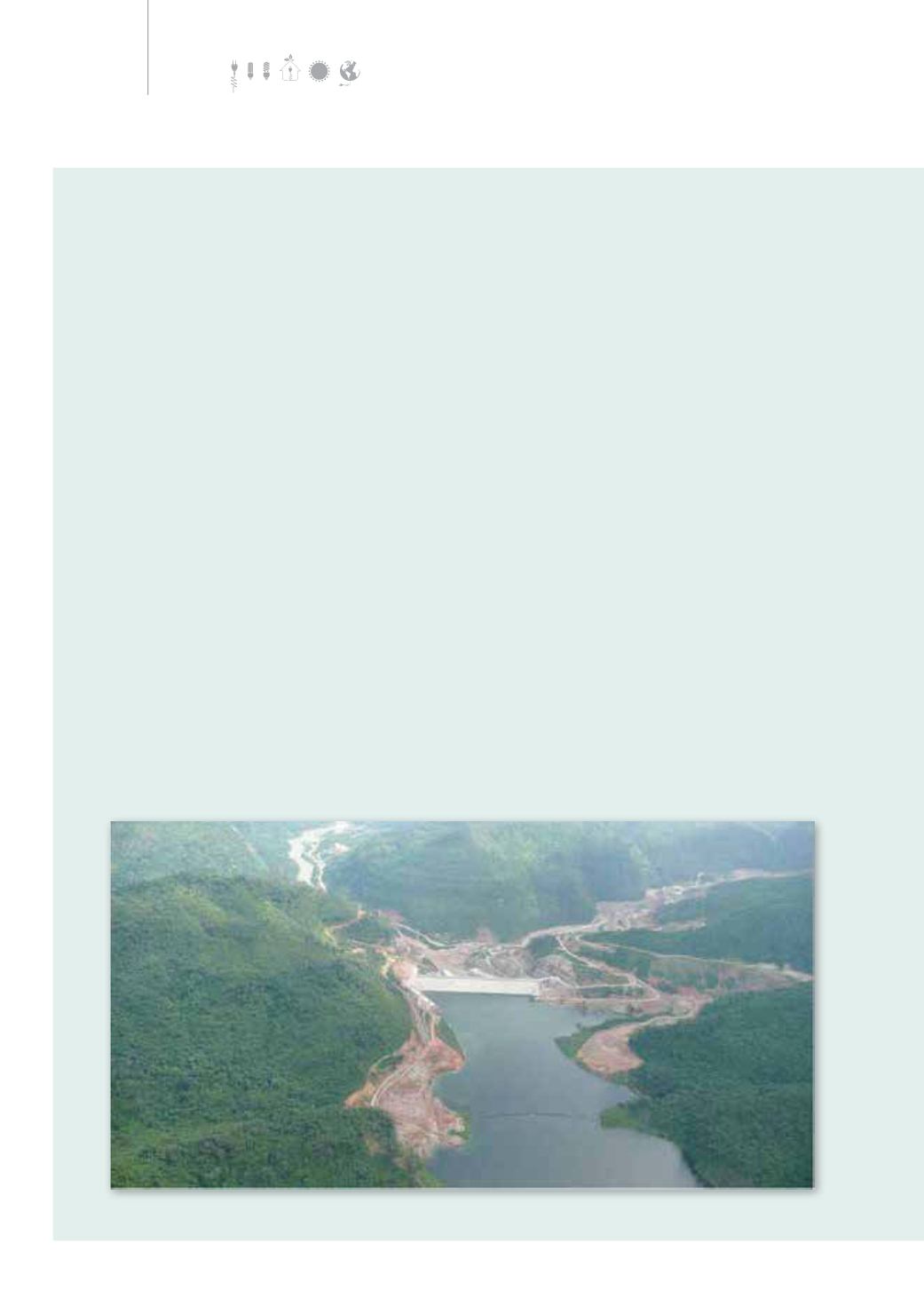
50
Annual Report
2013
4) Market and Competition
in the Republic of Philippines
In the past, electricity consumption in
the Philippines was limited by high
electricity fee due to limited electricity
distribution network. At present, the net
work has been improved, driving electricity
consumpt ion to moderate level or
approximately 6 per cent per year,
and is projected to remain at this level
until 2020. The country tried to lower
diesel dependence due to its high price
and at the same time promoted coal and
natural gas as major fuel source for
electricity generation and reserve. Over
75 per cent of the country’s installed
capacity is controlled by private power
producers who dominate the market
and operate large power plants.
5) Market and Competition
in the Lao People’s Democratic Republic
In Lao PDR, electricity consumption is
limited by the small number of population.
Approximately 80 per cent of electricity
produced in the country has been exported
to its neighboring countries, such as Thailand,
Vietnam and Cambodia. The major energy
source is hydro power. It is expected that
electricity generated from hydro power and
coal will remain the country’s major export
until 2020. Price, however, is likely to increase
as the government tried to reduce its cost
burden and tax incentives.
6) Market and Competition
in the Republic of the Union of Myanmar
After Myanmar opened its door to foreign
investors, thegovernment projected electricity
consumption in the country to increase
from 26 per cent at present to 45 per
cent by 2021 driven by domestic demand.
Hydro power and offshore natural gas are the
major energy source for power production.
However, political uncertainty and minorities
nationwide and the lack of currency stability
are major challenges and risks to foreign
investors.
2. Electricity Consumption in Thailand
It is projected that electricity consumption
in Thailand after ASEAN Economic Community
integration would grow by 5 per cent on average
Nam Ngum 2 Dam


